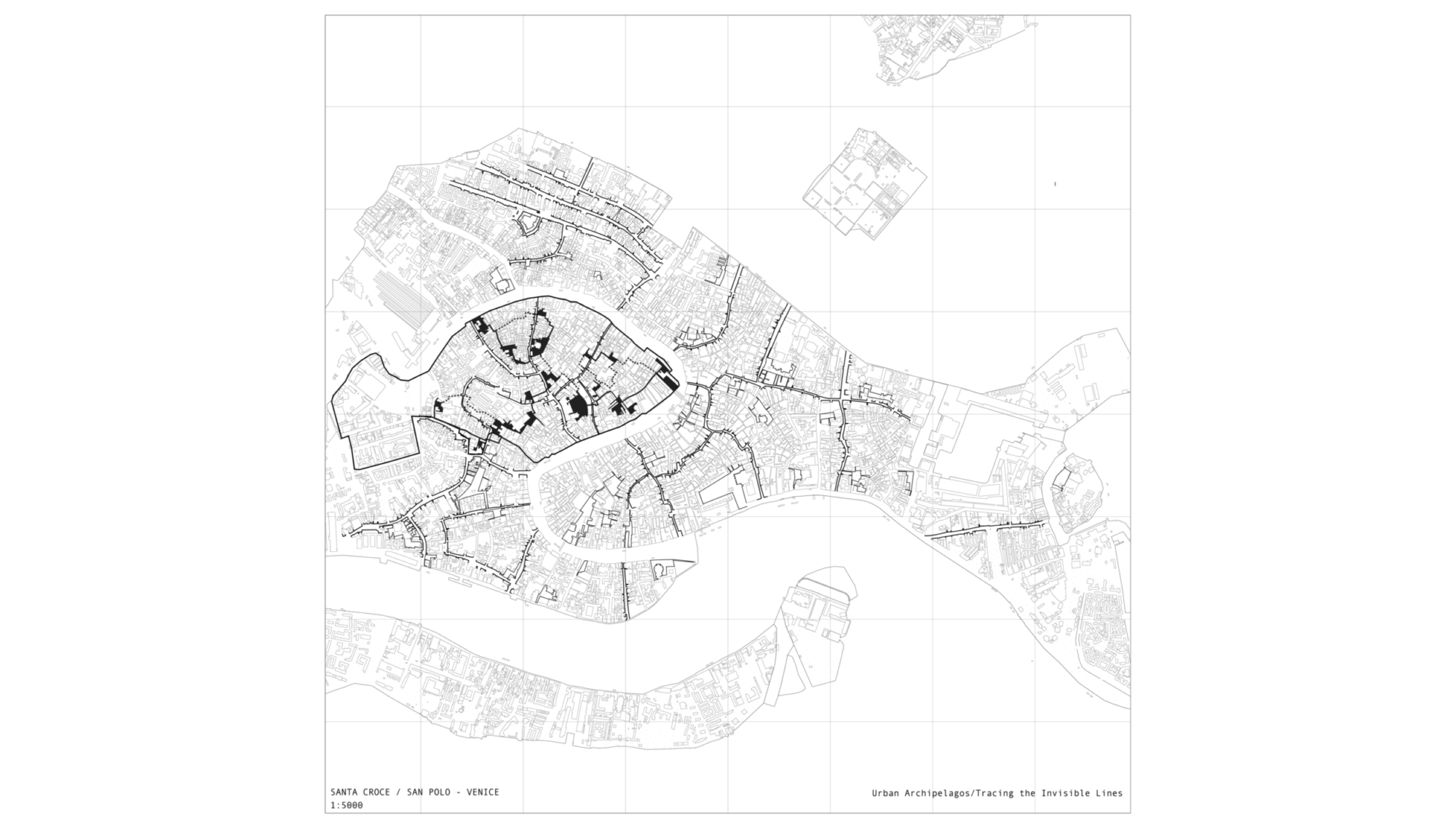
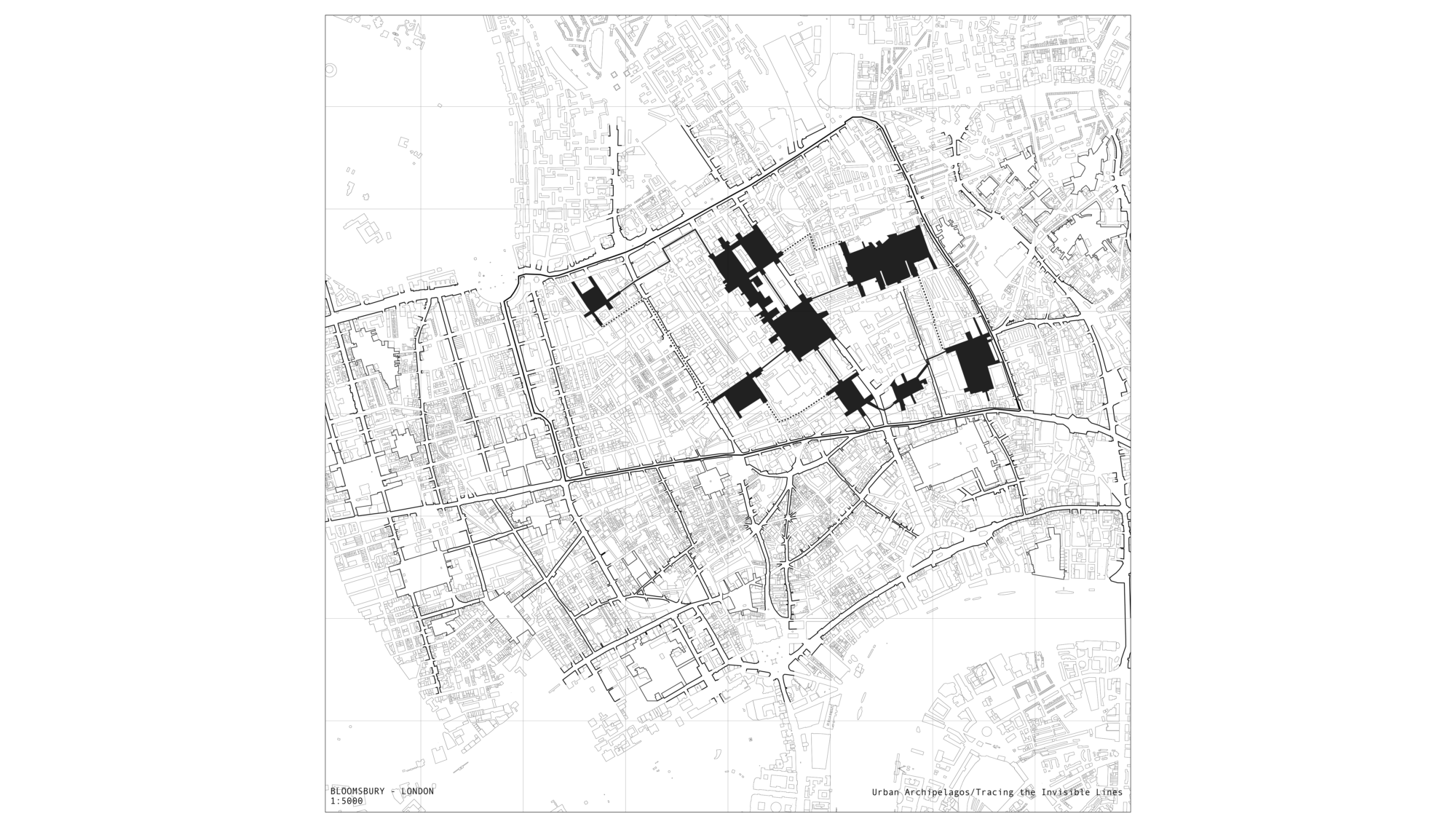
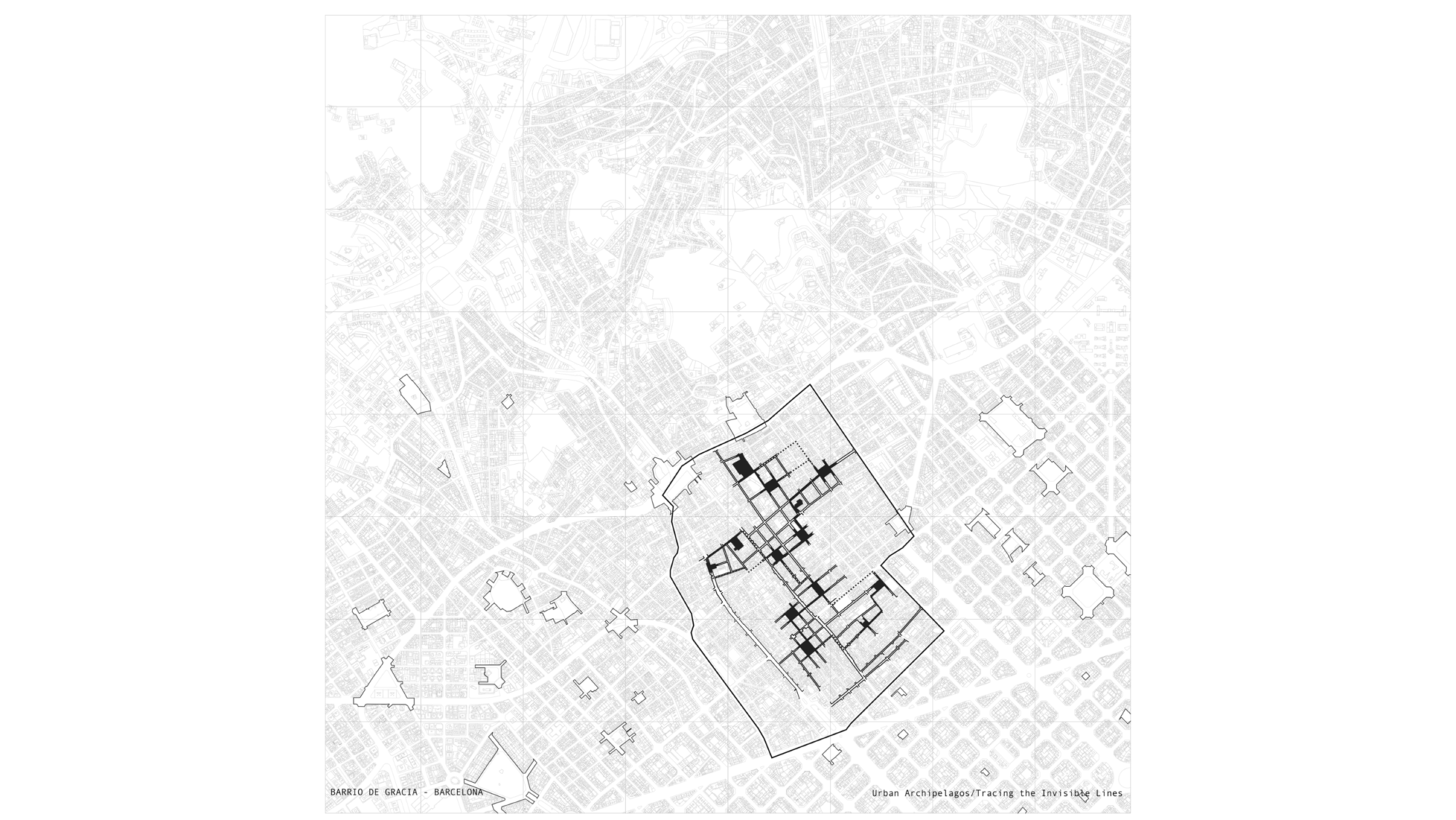
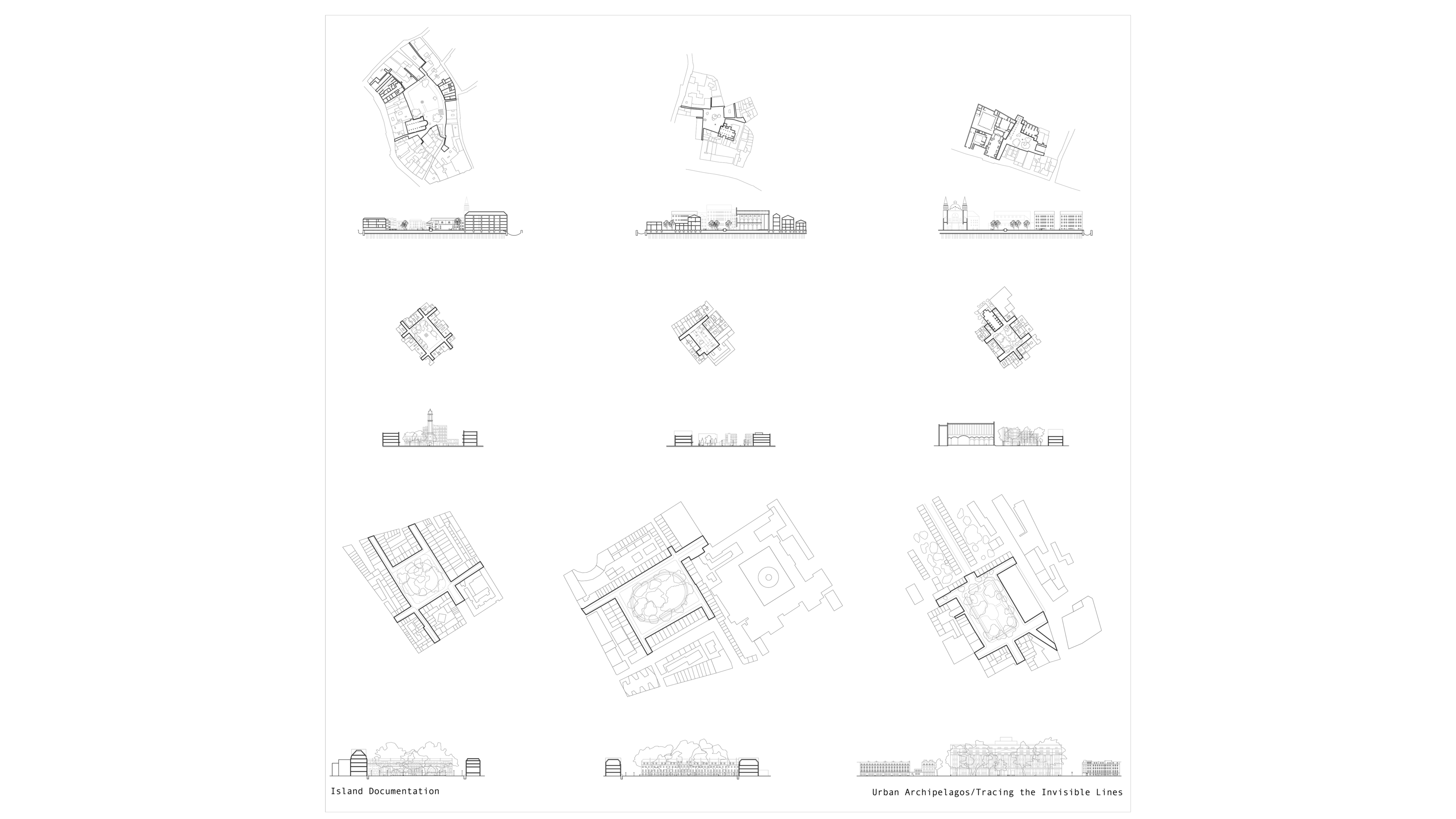
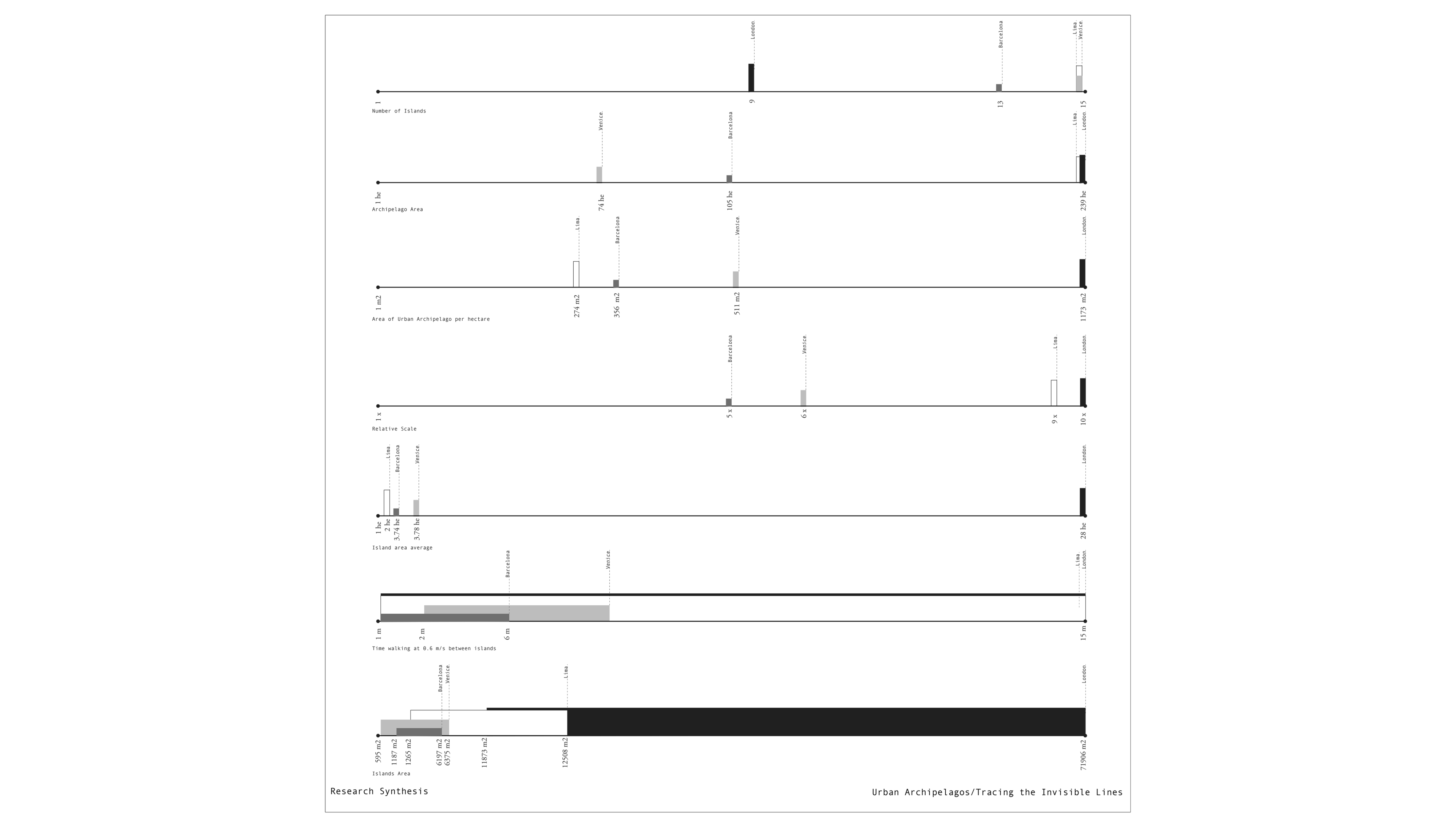
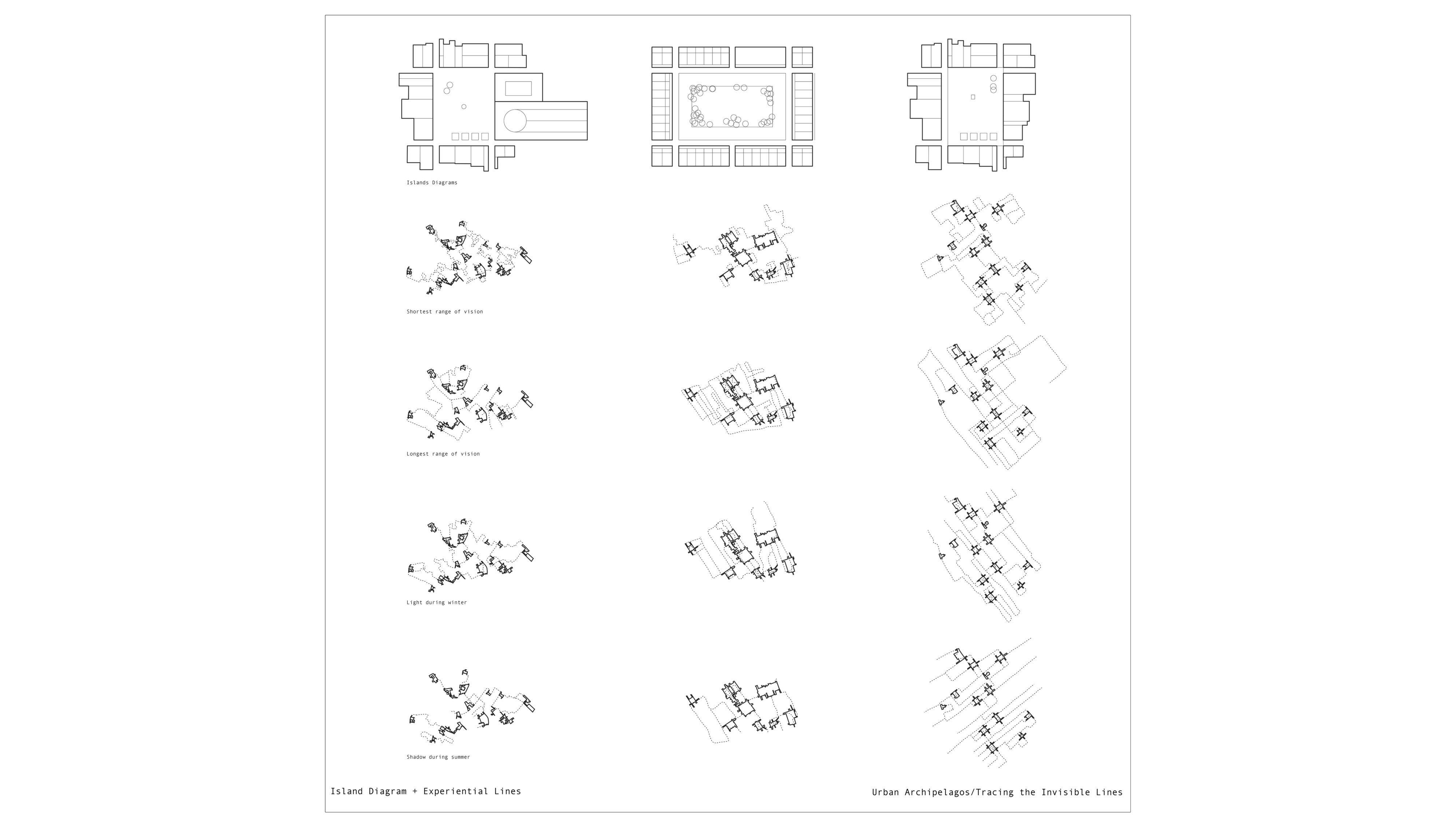
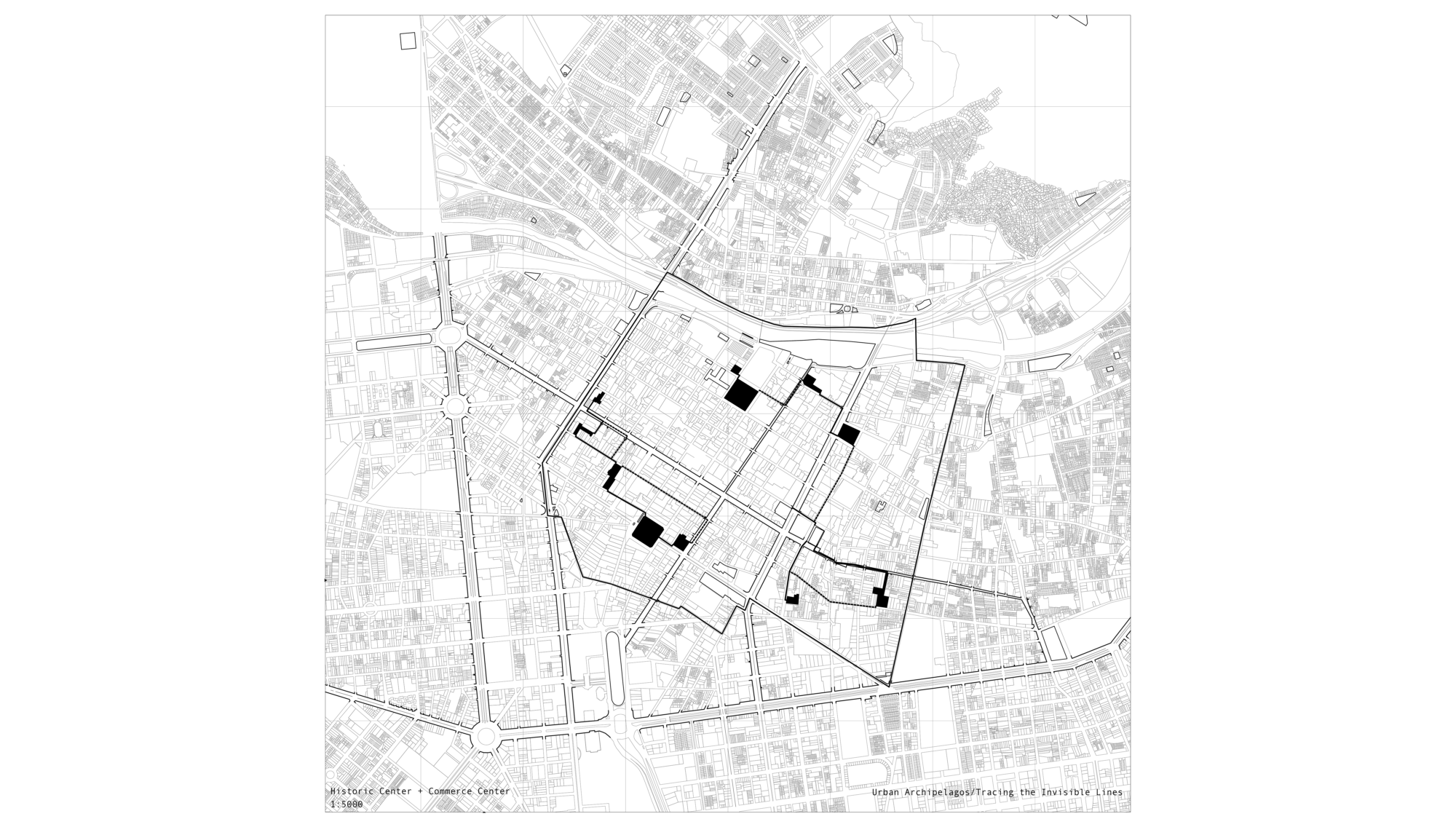
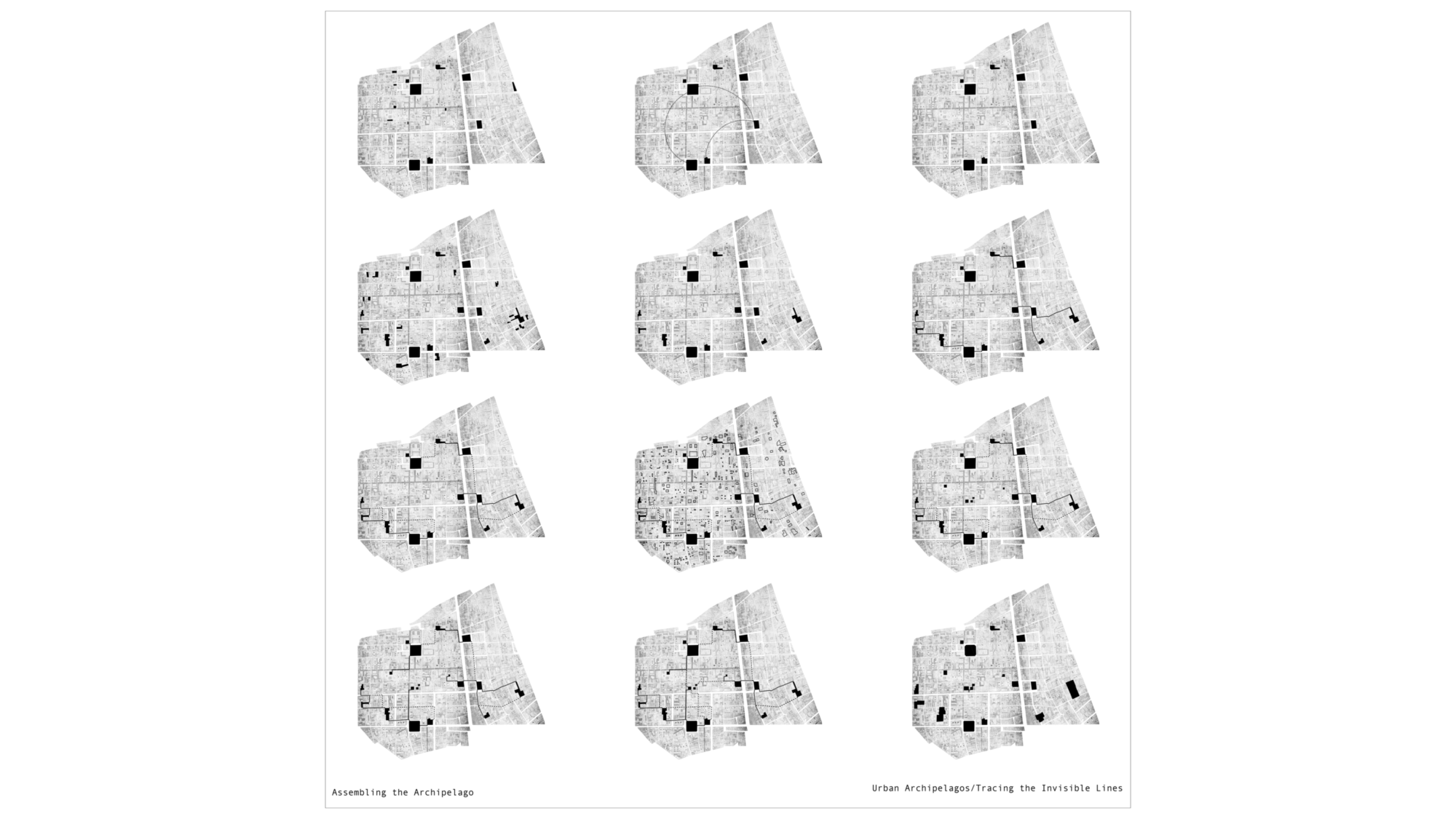
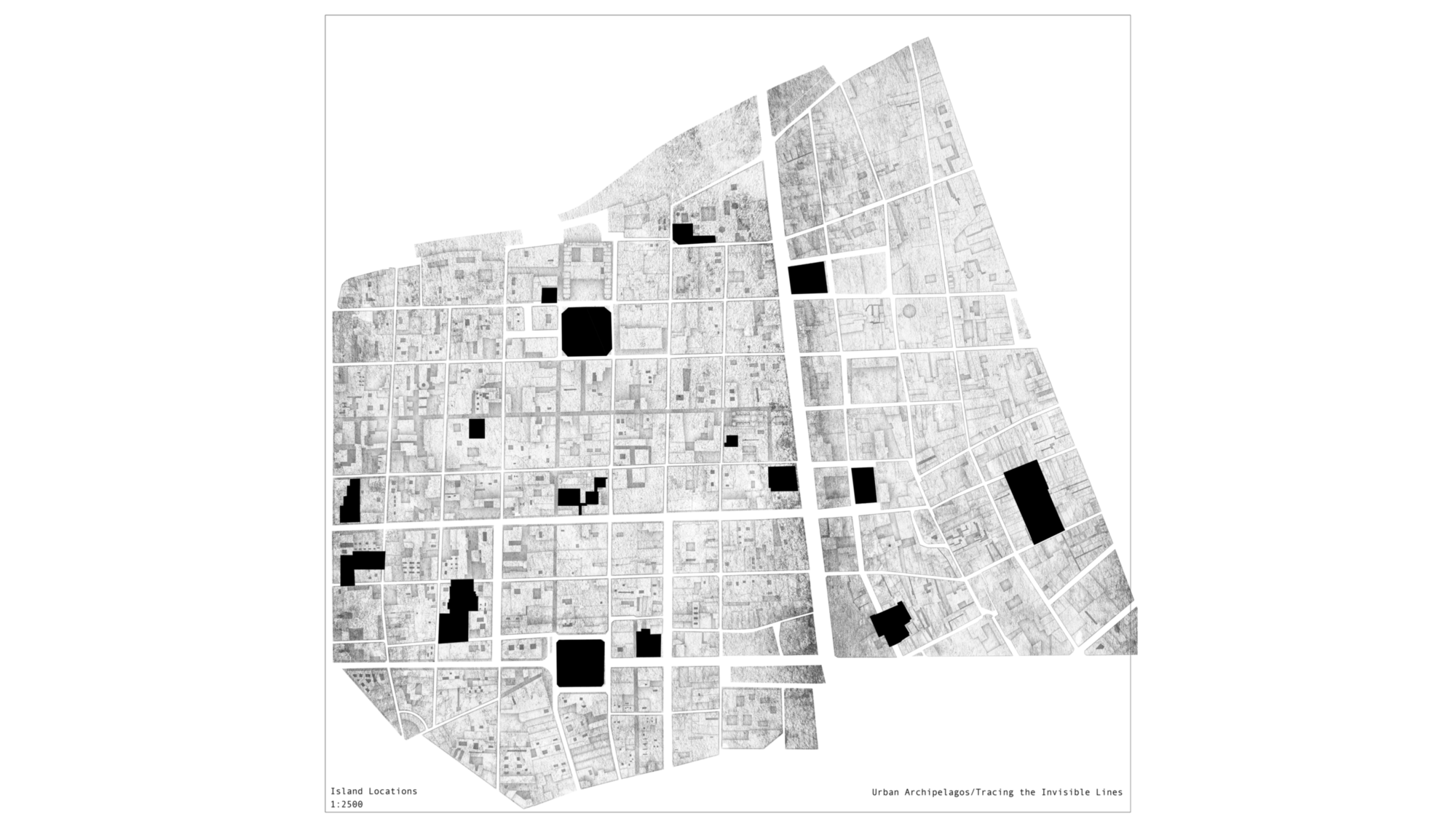
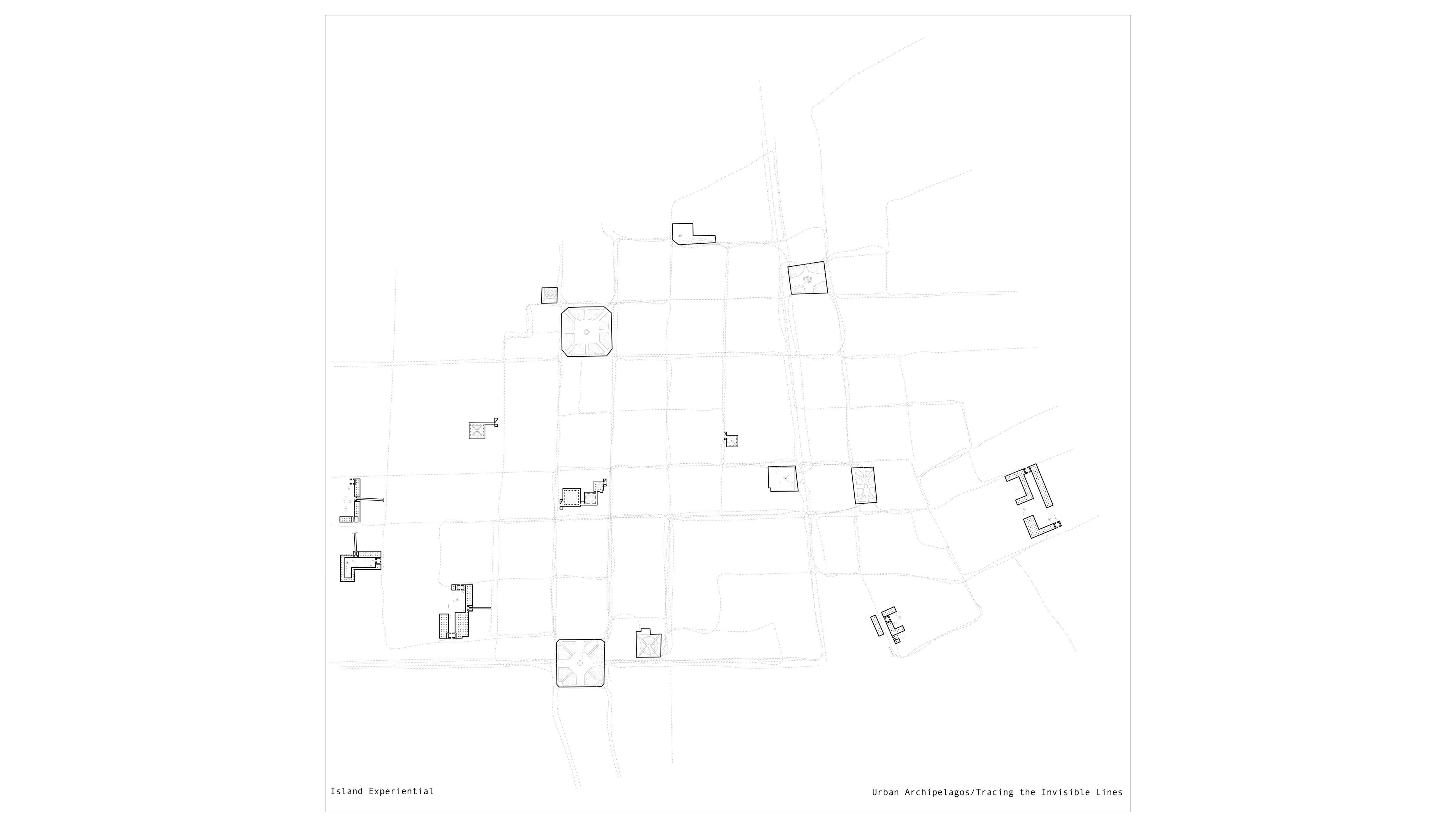
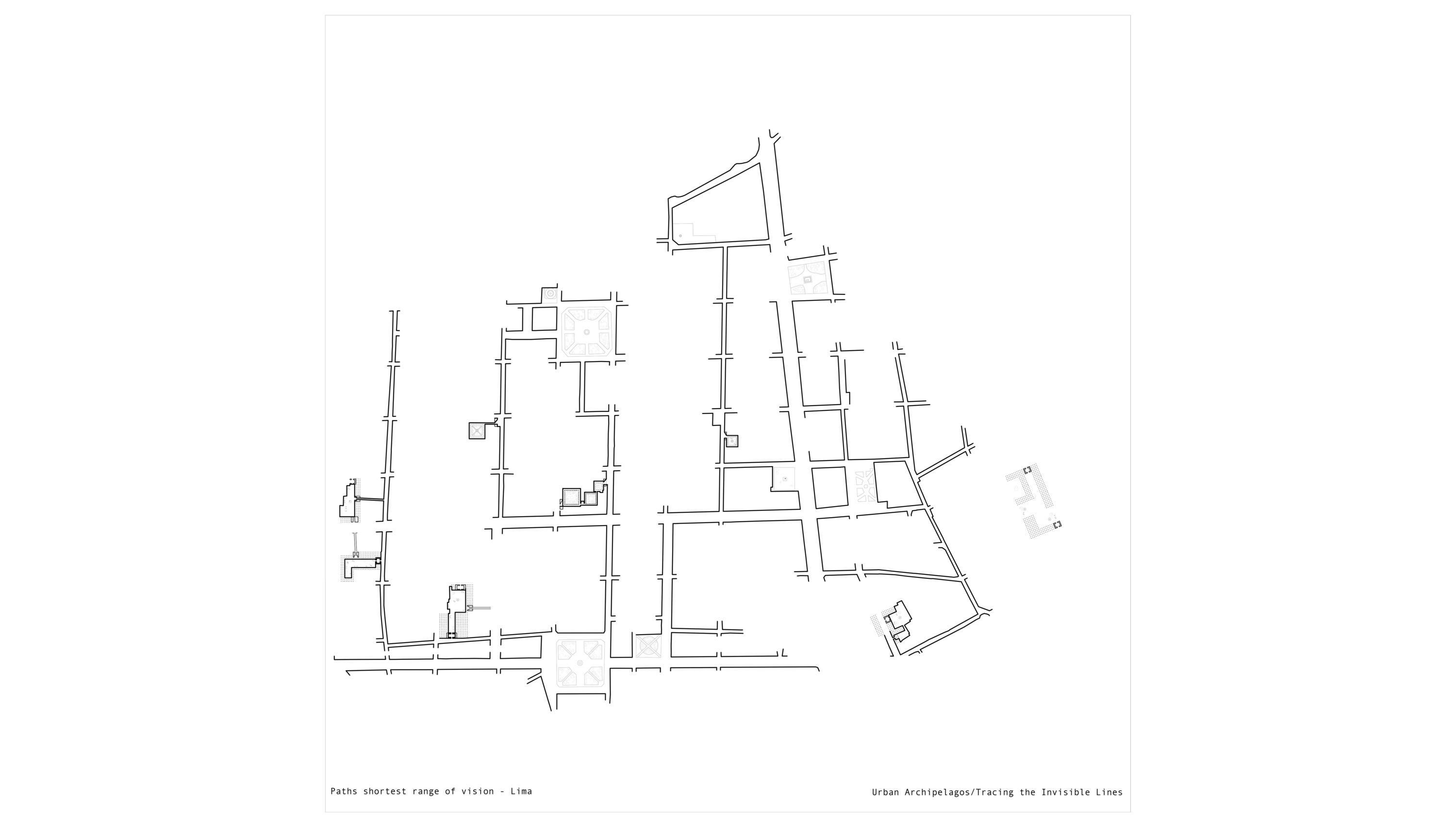
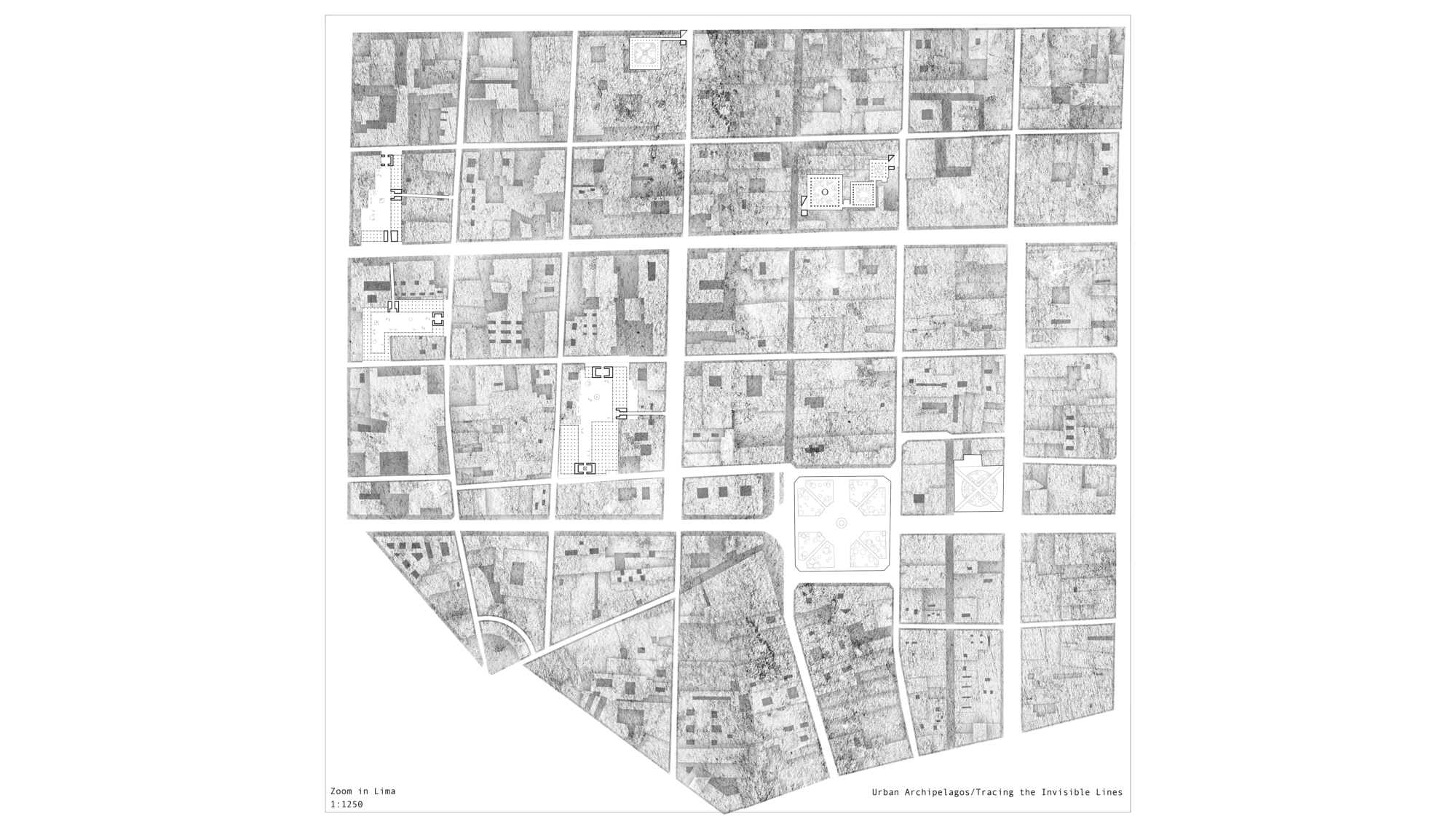

URBAN ARCHIPELAGOS: TRACING THE INVISIBLE LINES
URBAN DESIGN THESIS
USA, 2017
The thesis started with an interest in the history of Utopias. Through this path, the fascination for the repetitive use of the figure of the island as laboratories to test ideas started, understanding that they are centers from which their effects could radiate. I questioned how to reinterpret this figure in urban environments and what are the possibilities to introduce new models of living in and imagining the city collectively.
The following story will help to communicate the vision and experience of these urban archipelagos.
You shuttle your feet along a street of oily cobblestones, distracted by the baker’s window to your left bursting with fig pastries and mysterious rolls of dough and jellies. You pass a wood door painted red, a vast stone archway, a man watering his plants in a window. A few more steps and you are clear of the shade of the narrow street—you see the evening sky, people winding in and out of the colonnade across the campo, a voluptuous Baroque fountain standing between you and the other side. Moving through, you dip your fingers in the water as you eye a congregation of rusty tables draped with white cloth over which couples intimately enjoy their antipasti. You drift through the open space and into a crevice leading into another dark street. Winding right, then straight across a bridge, then right again, you pass many doors, many windows, a few shops before nding yourself in another clearing, this one larger than the last, but with the same air, the same glimpse of sky, the seemingly sentient facades and citizens strewn across the fountain in the center.
We know this sort of urban experience from many cities—the immediacy of meandering in a maze of streets, the encounter with an exceptional and collective urban space, the retreat into the anonymous, self-similar fabric of the city, and the subsequent re-encounter with yet another open space in which you ground yourself, congregate, eat, dance or simply pause to enjoy. From the campi of Venice to the communal squares in London, floating islands of collective space in the ocean of a city’s fabric are often what bind the experience of urban form together into a coherent whole.
While life occurs in every niche of the city, it is these exceptional spaces, found in the midst of the day-to-day rhythms of the street, that imbue the experience of the city with meaning, tempo, and possibility—in the spaces where each inhabitant emerges to appear and act amongst others. And it is the infinitely varied relations of these spaces to each other across the vastness of streets you may or may not ever know, through lines visible or invisible, that constitutes the public experience of the city.
“Urban Archipelagos – Tracing the Invisible Lines” aims to analyze the impacts and tensions between open spaces as systematic structures capable to activate the urban experience: Namely, how to use the archipelago metaphor as a representation technique and design tool for the implementation of urban projects?
In the field of urban design today we are witness to a historically unparalleled, nance- driven growth in cities worldwide. As cities infill, sprawl, and rise, they all too often are leveled by the homogeneity of lackluster and technocratic planning—bountiful chains of shopping centers and Starbucks in which to peruse the internet, but with meaningful experience and a legible structure (beyond mere branding) conspicuously absent. But, exemplary relations of these spaces appear understanding how collective islands in the city are not just isolated nodes and significant spaces in themselves, but inherently possess the potential to radiate their own ripples in the urban ocean, to call out to other islands and form bonds across the anonymity of the city.
In light of the past failures of modernist dreams to change life by reshaping the city in every physical aspect and the enduring ction of the tabula rasa, we must instead look to living examples which illustrate how through precise and critical interventions in the city we can maximize effect. Instead of eradicating a district and building it anew, we must equip ourselves to boldly intervene with loci, each with a profound sphere of influence. We can look back to when Modernist planning was in its heyday, and Aldo van Eyck created elemental but radical playground interventions in Amsterdam. Street intersections, linear parks, abandoned or bombed lots were equipped with a standardized play equipment. Van Eyck challenged the totalizing and sterile dreams of Modernist reconstruction by instead delicately knitting a constellation of playgrounds in the city—redefining the experience of not only public space, but the constitution of the city as a whole for a generation of inhabitants.
Urban Archipelagos are the object of this thesis, but in order to understand how they work it is necessary to unveil and trace the invisible lines that draws the tensions and currents between them. In so, I will introduce three case studies: Venice (Santa Croce/San Polo), London (Bloomsbury) and Barcelona (Barrio de Gracia) as a mode to study the object, and the tracing of the invisible lines will give hints of how they work. However, the relationship between these 2 parts is reciprocal, meaning that part of de ning what they are is understanding how they work, as well as its de nition can a ect their functioning.
After, a new case study will be introduced: Lima. rough this, the implementation of the idea would be tested, informing again its definition and how they work.
There are many cities which possess fragmentary open spaces with the latent potential to aggregate into connected networks of space. Open collective spaces, what we might think of as the islands that constitute an archipelago, are a type of urban condenser - places with their own fields of gravity which attract and generate collective activity far beyond their immediate physical boundaries. Each of these islands of space - largely defined by the activities they support and the social relationships they foster - radiates its impact like a ripple in a pond until it dissolves, and the sphere of the next island begins.
From this, how can we think of urban voids? how do these voids dictate the programmatic mass? How can we design from a position based upon urban experience? ese spaces don’t emerge alone, but come about through combinations of various programs that provide the platform for these relationships to happen.
As designers, we should aim to control or predict the city. Instead, we should understand every city as a complex, living entity and intervene consciously and strategically through an understanding of its unique, underlying structure and dynamics. is entails introducing islands, each with its own sphere of influence, with the aim to affect, but not prescriptively dictate, how the currents in the vast ocean of urban fabric evolve around and between them.
Masters of Urban Design Thesis
Druker Travel Fellowship Finalist
Harvard Graduate School of Design